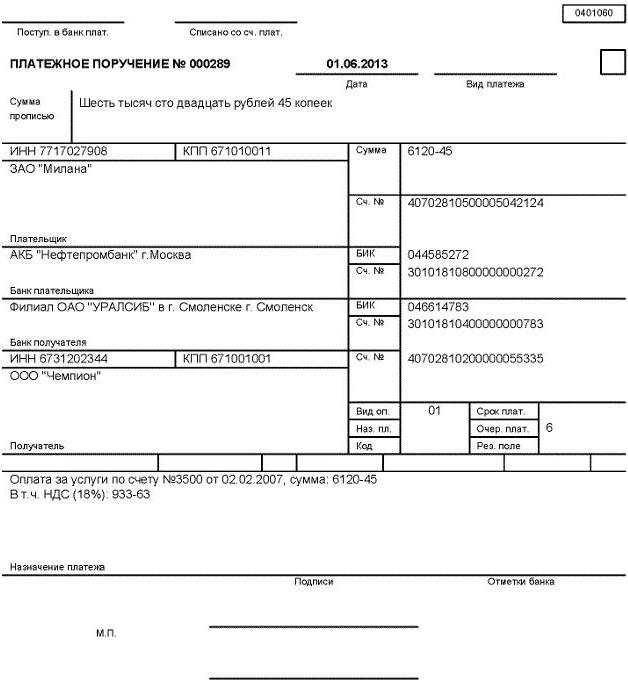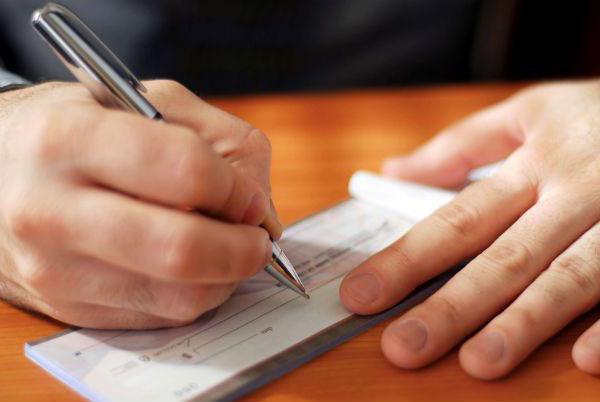Cashless circulation is a collection of payments that are transferred in the form of entries in bank accounts. What are its advantages?
- Money turnover is controlled.
- The credit capabilities of the banking system are expanding.
- Contributing to the acceleration of cash flow.
Let’s figure out what are the forms of cashless payments in the Russian Federation.
Tasks
Cashless payments perform the following tasks:
- contribute to the normal circulation of funds in the national economy;
- concentrate monetary resources in banks, while free financial resources of various enterprises become one of the lending resources;
- the observance of clear boundaries between cash and non-cash circulation of finance contributes to the creation of conditions that facilitate the planning of non-cash and cash circulation of money.
Principles
The principles underlying non-cash payments:
- legal regime for making payments and settlements;
- Settlements are made on bank accounts;
- liquidity is maintained at a level that allows payments to be made smoothly;
- must be the consent of the payer to such a payment;
- urgency of payment;
- monitoring by all participants over the correct execution of settlements, compliance with the adopted provisions on the procedure for conducting;
- property liability.
Forms of cashless payments in the Russian Federation we consider below.
The normative act determining the forms of settlements in the Russian Federation is Regulation No. 2 of the Central Bank of the Russian Federation “On non-cash payments in the Russian Federation” (dated 05.04.2001). They can be made by means of settlement documents: checks, letters of credit, payment orders and claims, collection orders. Also in Russia there are plastic cards and bills regulated by relevant documents.
So, what are the forms of cashless payments in Russia?
Settlements using payment orders
There are settlements using payment orders, that is, instructions of the payer (account holder) to the bank in writing about the transfer of a certain amount to the beneficiary's account in this or any other bank.
This basic form of cashless payments in the Russian Federation is used most often. It is executed by the bank regardless of the availability of funds in the account.
Payment orders are used for the following purposes:
- money is transferred for any services or supply of goods;
- pre-paid services, work, goods, periodic payments are made;
- money is transferred to place or repay loans, loans, deposits, interest payments;
- deduction of funds in a certain system of finance (duties, taxes, fees, etc.);
- transfer in favor or by order of individuals;
- transfers for other purposes provided for by the contract or legislation.
We consider the main forms of cashless payments in the Russian Federation. What's next?
Settlements via letters of credit
Settlements by letters of credit, which are conditional monetary obligations taken by the issuing bank by proxy of the payer, consist in the fact that payments must be made in favor of the recipient upon presentation of the relevant documents. They also provide for the authorization of another bank to make such payments.
Letters of credit are classified on the following grounds.
- If possible, change the conditions:
- Revocable, that is, such a letter of credit that can be canceled or changed by the bank at the request of the buyer at any time without notifying the supplier (in this case, refunds are provided).
- Irrevocable, which can be changed or canceled without the consent of the supplier.
If the corresponding form does not indicate its appearance, it is automatically revocable.
- From the standpoint of conditionality of cash payments:
- Deposited, or covered when the issuing bank transfers the amount of the letter of credit to the performing bank at the expense of the funds available to the payer or by providing him with a loan for the entire duration of the letter of credit.
- Guaranteed or uncovered, in which the executing bank is given the right to write off funds from its correspondent account within the amount limited by the letter of credit.
Letters of credit are used in calculations mainly for one-time deliveries of goods. Among the advantages, it should be noted the high guarantees of this form of payment, and the disadvantage is the shipment of goods only after the buyer opened a letter of credit and attracted funds for deposit from his turnover. What forms of cashless payments prevail in the Russian Federation? This question interests many.
Settlement with Checks
Settlements with the help of checks, that is, securities, which contain an undetermined order from the drawer to the bank to pay the amount indicated in it to the check holder. Drawer - an individual or legal entity that has money in the bank and can manage it with checks. Check holder - the person in whose favor the check is issued. The payer is the bank where the funds of the drawer are placed. What forms of cashless payments are still used in the Russian Federation? Let's figure it out.
Drawer - an individual or legal entity that has money in the bank and can manage it with checks. Check holder - the person in whose favor the check is issued. The payer is the bank where the funds of the drawer are placed. What forms of cashless payments are still used in the Russian Federation? Let's figure it out.
Checkbooks are divided into:
- limited, that is, with the amount of the limit agreed upon by the bank in a special account; it is valid for six months;
- unlimited, presented to reliable customers for no more than one year; if there are funds in the current account, then they are withdrawn from it in checks, if they are absent, then they are taken into account in a special loan account and are repaid in the future by the client.
Depending on in whose favor the check is written out, they distinguish between order, registered, bearer checks.
An order receipt allows the holder to cede the right to receive money to another person using an endorsement, that is, an endorsement. Such varieties are distinguished as:
- nominal endorsement - on the back of the check the holder puts his signature and gives the name of the person entitled to receive money;
- blank, when the holder puts a signature on the back of the check and it becomes a presentation document, according to which any owner can receive money from the bank legally;
- target - indicating the purpose of transferring the check to another person, that is, with limited receipt of money;
- non-negotiable - is used by the holder to limit or exclude possible claims in the case when the check is not paid; the text “endorsement” is used in the endorsement text.
The drawer cannot revoke the check until the deadline for presenting it for payment has expired. Credit organizations issue such checks that are able to be used in settlements between banks in accordance with concluded agreements with customers, as well as in accordance with the rules for conducting check transactions within the bank. Forms of cashless payments in the Russian Federation in 2016 include payments for collection.
Settlement Payments
This is such a banking operation by which the bank at the expense of the client and on his behalf is able to carry out actions to receive payment on documentary grounds from the payer. Similar calculations are made on the basis of:
- collection orders, paid in an indisputable manner without orders of the payer;
- payment claims, which are paid by order of the payer or without him.
Collection orders and payment requirements are presented to the payer's account by the recipient through the bank serving him. This is the most common form of cashless payments in the Russian Federation.
A payment request is such a settlement document that contains the requirements of the creditor or recipient of funds on the basis of an agreement with the payer (debtor), obliging him to pay a certain amount through the bank. A similar form is used in the calculations for a particular work, rendered service, delivered goods, etc. Settlements with the help of payment requirements are carried out infrequently, since the procedure for processing documents and paying for any type of goods takes quite a long time.
Collection order - such a document according to which funds are debited from the payer's account in an indisputable manner. What other forms of cashless payments are used in the Russian Federation?
Settlements using plastic cards
The generalized term "plastic card" refers to all kinds of cards, differing both in their purpose and in the content of the services they provide, as well as in technical abilities and issuing organizations. The forms of cashless payments in the Russian Federation (we briefly described the main ones) payment by card also applies.
The specificity of any plastic card, regardless of its perfection, is that it stores some set of information that is used in various types of application programs. In the field of financial turnover, plastic cards are considered one of the most progressive ways of organizing cashless payments.
Bank Card Classification
Plastic cards are classified on the following grounds:
- By type of information carrier:
- microprocessor;
- magnetic.
- By owner loan options:
- credit, which allow you to get a loan in a limited limit if necessary;
- debit, that is, limited to the amount that the owner has posted on the card.
- Depending on the nature of the owner:
- personal - intended for individuals;
- corporate - with legal entities.
- By type of payment system:
- Russian (Sbercard, STB card, Golden Crown, etc.);
- of international importance (Euro Card, Master Card, etc.).
- By the nature of the currency:

- currency;
- rubles.
- Depending on the operations that are able to perform:
- ordinary, applicable to all services or goods;
- specialized, servicing settlements for specific services (for example, payphone plastic cards);
- privileged (or discounted), giving the cardholder any discounts and benefits for payments of various kinds.
What regulates the organization and forms of cashless payments in the Russian Federation? About it below.
On the territory of the Russian Federation, the issue and use of bank cards is controlled by the Regulation of the Central Bank of the Russian Federation No. 23 dated 04/09/1998 “On the Procedure for Issuing Credit Cards by Banking Organizations and Settlement of Transactions Conducted with their Use”. Issue of cards in our country can be made exclusively by resident organizations.
Types of cards for individuals and legal entities
Individuals (both residents and non-residents) can receive the following types of cards:
- settlement - a card issued to a person who owns funds in a bank account; it enables its holder to manage funds in his own account within the established limits, to pay for various services and goods or to withdraw cash;
- credit - a bank card that allows its holder to carry out operations in the amount provided by the bank's credit line, and without going beyond the limit of expenses; used to pay for various services and goods or cash withdrawals.
Legal entities can receive the following types of bank cards from the issuer:
- Settlement corporate, allowing the holder authorized by the legal entity to manage the money available on his account within the allowable expenditure limits corresponding to the conditions specified in the contract with the client;
- a corporate credit card, the presence of which enables the holder authorized by the legal entity to carry out operations in the amounts provided by the bank in accordance with the credit line and the terms of the contract.
On the territory of the Russian Federation, any settlements using bank cards both between resident banks and between banks and other resident legal entities, as well as entrepreneurs (individuals) must be made in rubles.
We examined in detail the forms of cashless payments in the Russian Federation and their characteristics.
Responsibility of banks and customers in case of violation of conditions
If the rules for transactions are violated, banks and enterprises should be held accountable for this in accordance with current legislation. Property liability is stipulated by contracts and regulations concluded between the bank and the client. Sanctions in the form of fines can be applied only when there is a contractual relationship between the bank that violated the conditions and the client. This is regulated by Art. 862 of the Civil Code of the Russian Federation "Forms of cashless payments".
In such an agreement, it is mandatory that there are indications of interest rates on deposits and loans, the terms for fulfilling the services of the bank and their cost, the terms for processing documents regulating payments, the property liability of each party, and the procedure for terminating the agreement. What forms of cashless payments are used in the Russian Federation are now known.
The procedure for opening, maintaining and closing accounts is regulated by the bank in compliance with federal laws. The company also bears full responsibility if it does not comply with loan agreements and payment discipline. It may be declared insolvent if it does not constantly fulfill its settlement obligations, which is communicated to suppliers and higher authorities.
We examined in the article forms of cashless payments in the Russian Federation.